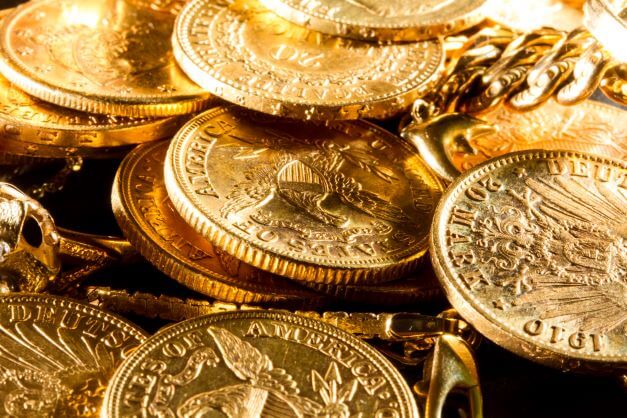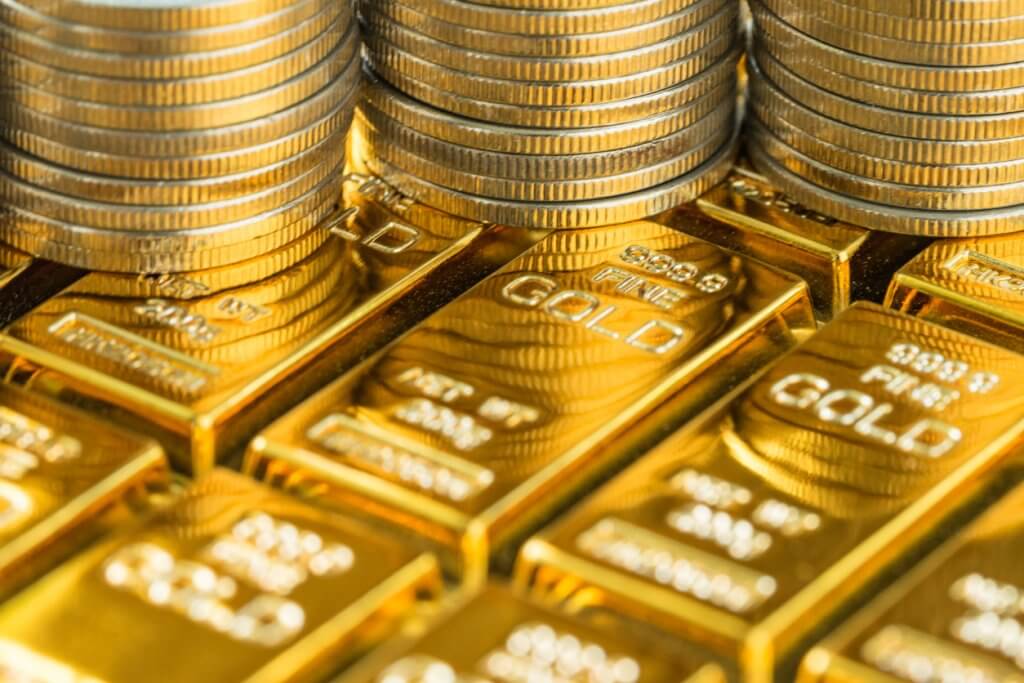When you’re buying, selling, or even just holding onto coins, rounds, or bars, one of the most important details you need to know is the metal purity—the percentage of a specific precious metal that makes up the item. That number affects everything from its market value to its appeal for collectors and investors.
At Smyrna Pawn in Smyrna, GA, we meet customers every day who are curious about what their precious metal items are worth. Some have inherited coins from relatives, others bring in investment-grade bullion, and some simply want to sell a piece they’ve had for years. No matter the situation, understanding how to identify and interpret metal purity is essential for making informed decisions.
In this guide, we’ll walk you through:
What metal purity means
Why it matters for value
How it’s indicated on coins, rounds, and bars
Historical context and modern testing methods
Factors that can influence purity levels
How Smyrna Pawn can help you get accurate evaluations and top offers

What Does “Metal Purity” Mean?
Metal purity, sometimes called “fineness,” is the measure of how much of a specific metal—gold, silver, platinum, or another—is in your item compared to other metals or alloys present. Purity is usually shown as a percentage (like 90%) or as a decimal (like .900).
For example:
-
A coin weighing 10 grams with 9 grams of silver is 90% pure (.900 fineness).
-
A gold bar labeled .9999 fine gold contains 99.99% gold and almost no other metals.
This detail is far from just a technical footnote—it’s a direct indicator of your item’s intrinsic value and potential resale price.
Why Purity Matters for Value
The higher the purity, the more of that precious metal you’re getting in each piece. That matters for three key reasons:
-
Investment Potential – Precious metals are often purchased as a store of wealth. A 99.9% pure gold coin typically commands a higher price than one that’s 90% pure, simply because there’s more gold in it.
-
Collectibility – While some coins gain value from rarity, design, or historical significance, metal content is still a major driver of worth. A limited-edition 99.99% pure coin will usually be more desirable than a lower-purity counterpart.
-
Resale Confidence – Buyers want to know exactly what they’re getting. Purity markings and verification from a reputable pawn shop or dealer like Smyrna Pawn help establish trust.
How Purity Is Displayed on Coins
Coins have a long and fascinating history, and the way purity is marked has evolved significantly over time.
Historical Context
In ancient times, purity was often inconsistent. Coins were struck from whatever metals were available, and the actual content could vary. This created trust issues in trade. Eventually, civilizations introduced standards:
-
The Lydians and Greeks began minting coins with more consistent gold and silver content.
-
The Roman Empire enacted laws specifying weights and compositions, improving trade and economic stability.
This idea of regulating purity eventually led to hallmarking, where marks were stamped on coins to indicate authenticity and content.
Modern Coin Purity Markings
Today, coins almost always have their purity clearly marked. Examples include:
-
“.999 fine silver” – indicating 99.9% silver content
-
“1 oz .9999 gold” – indicating one troy ounce of 99.99% pure gold
These marks make it easy to identify what you have. At Smyrna Pawn, we also use professional testing—like X-ray fluorescence (XRF)—to verify that the stated purity matches the actual metal content without damaging your coin.
Understanding Purity in Rounds
Rounds resemble coins in shape and size but are made by private mints rather than government mints. They don’t have a face value or legal tender status, but they’re very popular among investors and collectors.
Why Rounds Are Popular
Lower premiums compared to government-minted coins
Beautiful designs—often commemorative or artistic themes
Direct connection to metal value—their worth is based purely on the precious metal content
Purity Indication on Rounds
Just like coins, most rounds have purity stamped directly onto them, such as:
“.999 fine silver”
“.9999 fine gold”
Some also come with certificates of authenticity that detail the purity, weight, and mint of origin. At Smyrna Pawn, we encourage customers to bring in both the round and any paperwork, as it can boost buyer confidence and help you get a better offer.
Purity in Precious Metal Bars
Bars are often favored by serious investors due to their storage efficiency and lower premiums over spot price. They can range from small 1-gram pieces to massive 1-kilogram or larger bars.
Why Investors Like Bars
Better value-to-storage ratio
Lower premiums per ounce compared to coins or rounds
Easy to stack and store
How Bars Display Purity
Bars are typically stamped with:
Weight (e.g., 1 oz, 10 oz, 1 kg)
Purity (e.g., .9999 fine gold)
Refiner’s name and sometimes a serial number
Many refiners also issue matching certificates that confirm the bar’s authenticity. At Smyrna Pawn, we check the bar’s purity markings and use testing methods to ensure accuracy before making an offer.
Factors That Can Affect Purity
Even if an item is stamped with a certain purity, various factors can influence its actual metal percentage.
Refining Process
Modern refining techniques, like electrolysis, can achieve higher purity than traditional smelting. However, older items—especially antique coins—may have slightly lower purity levels due to the limitations of historical refining methods.
Alloying
Soft metals, such as gold, are often mixed with harder metals like copper or nickel to increase durability. For example:
American Gold Eagle coins are 91.67% gold, with the rest made of silver and copper for strength.
Sterling silver jewelry is typically 92.5% silver, with the remainder copper.
Wear and Damage
Circulation, scratches, or corrosion can slightly reduce the amount of precious metal in older items, especially coins. This is why visual inspection and professional testing are so important.
Modern Testing Methods at Smyrna Pawn
We use reliable, non-destructive testing methods to verify purity. The most common is X-ray fluorescence (XRF) analysis, which measures the exact composition of your item in seconds. This process:
Doesn’t scratch or damage the item
Gives precise readings of all metals present
Provides a printed or digital report if needed
Knowing your item’s verified purity ensures you get an accurate offer based on current market prices.

Examples of Common Purity Standards
Here’s a quick reference list for some widely recognized precious metal purity levels:
| Metal | Common Purity Mark | Description |
|---|---|---|
| Gold | .9999 fine | 99.99% pure gold |
| Gold | .9167 fine | 91.67% gold (often alloyed for strength) |
| Silver | .999 fine | 99.9% pure silver |
| Silver | .925 (Sterling) | 92.5% silver, 7.5% copper |
| Platinum | .9995 fine | 99.95% pure platinum |
Why Knowing Purity Helps You as a Seller
If you’re planning to sell coins, rounds, or bars at Smyrna Pawn, having a clear understanding of your item’s purity means you can:
Negotiate from a position of knowledge
Understand how offers are calculated
Avoid undervaluing your items
We base our offers on a combination of purity, weight, and current market prices—and we’ll explain exactly how we arrived at our offer so you know you’re getting a fair deal.
Why Buyers Care About Purity
For buyers, purity directly influences:
Investment value – Higher purity means more actual precious metal content.
Liquidity – Pure metals are easier to resell or trade.
Trustworthiness – Items with verified purity and authenticity sell faster and often at higher prices.
That’s why at Smyrna Pawn, we not only test items before we buy them but also clearly communicate purity levels to buyers when items go back on the market.

Local Advantage: Selling to Smyrna Pawn
Selling locally at Smyrna Pawn has unique benefits:
On-the-spot testing – No need to ship items away or wait for mail-in services.
Immediate payment – Get cash in hand the same day.
Market-based pricing – We use up-to-the-minute precious metal market prices when making offers.
Trust and transparency – We explain our evaluation process so you understand exactly what you have and why it’s worth what we offer.
Final Thoughts – Purity Is Power
Whether you’re a collector, investor, or someone looking to sell, knowing the metal purity of your coins, rounds, and bars gives you a major advantage. It helps you understand value, negotiate with confidence, and ensure you’re getting a fair price.
At Smyrna Pawn in Smyrna, GA, we have the tools, expertise, and market knowledge to assess your items accurately. We can test your pieces, explain the results, and give you a fair offer—whether you’re selling one coin or a large investment portfolio.
Ready to find out what your gold, silver, or platinum is worth?
Bring your coins, rounds, or bars to Smyrna Pawn today. We’ll check the purity, calculate the value, and pay you cash on the spot based on current market prices.
